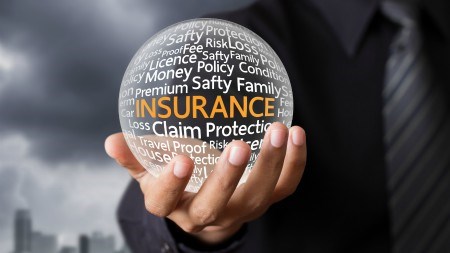It is vitally important that you insure your most valuable asset correctly. Here is an easy to understand guide on insurance for homeowners.
Owning a home comes with plenty of other considerations which one might not always be top of mind, one of which is insurance. Homeowners must always ensure that they are correctly covered; knowing what is covered and what isn't can save you a lot of money and heartache in the future.
“Your home should be a place where you can always relax and being adequately insured will give you peace of mind for when life happens. From the structure itself to the valuables inside, being adequately insured will ensure that you are not burdened with the financial loss whilst going through the emotional stress of unexpected” advises Craig Hutchison, CEO Engel & Völkers Southern Africa.
It can be daunting choosing the right cover, whether you're moving or want to renew your policy; here are some basics that everyone should consider:
Difference between Home Content & Building Insurance
Home contents insurance covers all the items in your house that you would take with you if you were to move.
Includes:
Cover for loss or damage to household goods and personal possessions
Cover for loss or damage caused by fire, lightning, power surge, explosion, malicious damage, storms, bursting or over-flowing of geysers, equipment or pipes, break-in and theft
Cover for food that deteriorates because of a power failure or if your freezer breaks down
Cover for stolen washing and/or garden furniture
Cover in the event of you and/or your spouse’s death if caused by fire or break in at your home
Cover for your domestic employees’ or guests’ belongings (only if there is proof of damage caused by a break-in)
Building insurance covers you for environmental and accidental damage that might happen to the physical structure of your house and outbuildings.
Includes:
Loss or damage caused by fire, lightning, explosion, earthquakes, the bursting or overflowing of geysers, equipment or pipes and storm or flood
Damage caused by animals, vehicles and falling trees
Malicious or intentional damage
Break-in or theft – if that break-in or theft causes damage to the actual building
Rent you lose if your tenant has to vacate the building as a result of damage by anything covered by the policy
The value a home is insured for does not reflect the market value of the property, but represents the amount it will cost to rebuild the entire house following destruction.
Home & Building Insurance options
There are many options available and every policy is different, it all depends on your specific need, property and personal criteria. According to Attie Blaauw, head of Personal Lines Underwriting at Santam these are the most popular options available for both home and building Insurance:
- Fire
- Subsidence & Landslip
- Explosion
- Lightning
- Flood
- Sea surge
- Water/snow
- Storm/wind
- Hail
- Earthquake
- Burglary/theft
- Malicious damage
- Power surge
- Accidental damage
What to look for when choosing Home & Building Insurance?
Know what’s covered: It sounds simple but many people don’t know what is actually covered by their policy.
Beware of the upselling mortgage broker: Many banks and building societies encourage borrowers to take out home insurance that is tied in with their mortgage but you may find you are paying more than if you researched the market and insured through a broker. It is always worth looking for the policy that suits you best and provides the best value.
Estimates: Always ensure that you have accurate estimates for both the re-build cost of your home and the replacement cost of all the contents you had in mind when taking out the policy.
Keep an eye on annual increases: Most home insurance policies will increase every year on the basis that re-build costs are also increasing, always keep an eye on these increases.
True value underestimating: The true value of your home’s contents is a common mistake. Overlooking a few of those recent purchases could mean that some items may not be covered under your current policy. Always keep an up to date valuation of your possessions to ensure you have everything covered.
A list of what is covered must be drawn up and checked: Some policies offer more benefits than others, so it pays to check ‘who pays for what’.
The home must be insured for the full replacement value: This is not the same as the market value. The value of the land on which the house stands is excluded from the calculation of the replacement value of the actual building of the house.
What does Home & Building Insurance NOT cover?
Colin Mchunu, Senior Manager, Alexander Forbes Insurance advises you to check the exclusions as they differ from insurer to insurer. Every insurance company is a little different and what is included or excluded on your policy depends on their rules as well as the type of policy you have. It’s important to be aware of all exclusions on the policy and to prepare yourself by purchasing additional coverage to fill the gaps where needed.
Instances in which a claim may be rejected:
Damage caused by pets such as soiling, scratching, tearing, denting or defacing of the property.
Should you run a bed and breakfast from home; the appliances in the rooms are excluded from household cover.
Not all theft claims are covered unless forcible or violent entry on the property is visible.
If there is an indication of poor property maintenance resulting in damage that could have been avoided, namely termites, insect damage, bird or rodent damage, rust, rot, mould, and general wear and tear are not covered.
If there is damage to the property caused by roots and weeds.
Chipping of sanitary ware, wall or floor tiles or paving is not covered.
If there was a lack of sufficient security in place at the time of your claim.
If your home was left unoccupied for a significantly long period of time.
If your home should suffer a power outage, things like food spoilage are not covered under a standard policy.
Are you required to have Home & Building Insurance if you own a home?
Your mortgage lender would have made it a condition of the mortgage terms that your home has adequate building insurance covering your property’s structure and permanent fixtures. That’s not likely to be the case when it comes to contents insurance. If you no longer have a mortgage and your property is owned outright, there’s no legal obligation to have either home buildings or home contents insurance.
Factors to consider to determine if you getting best premium
According to Colin, Alexander Forbes Insurance controllable factors that may influence an insurer’s quote are:
previous claims you have made
superior security protections in place
voluntary additional excess you may choose What factors can affect Home & Building Insurance premiums?
Value at risk
Location of risk
No claim bonus
Excess applicable
Security measures
Construction of building and extent of cover
“Your home is an extension of you, and considering the investment made on the property purchase, it is important to ensure home and contents are sufficiently covered in order to avoid costly surprises in the event of loss or damage” Craig concluded.




